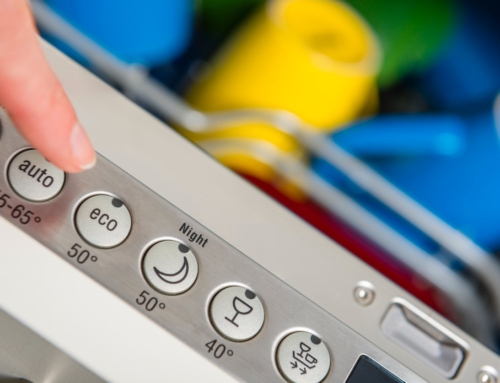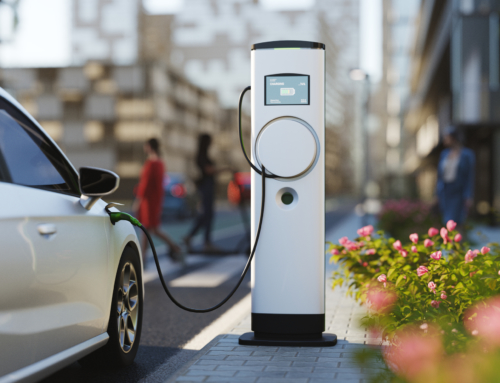Many homes experience power surges, but this doesn’t mean your home should be a victim.
Understanding how power surges work is key in providing your home and family with the adequate protection they need. These protective measures also safeguard our environment—by minimizing the amount of power and electricity you use, you help minimize the amount of toxic fumes released by power plants.
Here’s everything you need to know about what power surges are and what you can do to prevent them.
What Is a Power Surge?
A power surge occurs when too many volts run through your electrical system. Electricity that goes through your home’s outlets typically fluctuates between zero and 169 volts. When electricity exceeds 169 volts, a power surge happens.
A power surge can happen when:
- There’s an electrical interruption in your power grid.
- One of your appliances pushes electricity back into the electrical system instead of drawing it out.
What Causes Power Surges?
Electrical surges occur for various reasons. Here are the most common:
- Improper electrical wiring. This can be due to DIY home projects and/or older homes. Homes built prior to the 1980s were not designed with electrical systems that are meant to accommodate computer equipment and entertainment systems. Homeowners who are unaware of this do not update their wiring system, making power surges likely.
- Storms and lightning strikes. High winds and lightning can damage electrical equipment. This damage can boost electrical pressure and create a power surge.
- Devices that run a large amount of electricity. Certain devices, such as your refrigerator and air conditioner, require a lot of electricity to function properly. When they are used excessively, they can cause the electric power to spike.
What Are the Signs of a Power Surge in Your Home?
Below are the common signs that indicate there is a potential power surge in your house. Use these to help you minimize the impact of electrical surges:
- Your devices are losing power (e.g., clocks or lights are flashing).
- Your devices are suddenly resetting themselves (e.g., TV keeps powering off and on).
- You have a tripped circuit breaker (e.g., burning smell, hot to the touch, burned parts).
- You have an old house (built before 1980) that has not been inspected by an electrician since its purchase.
How Can You Prevent Power Surges?
Luckily, there are ways to minimize the likelihood of power surges in your house. These three methods can help you when it comes to how to prevent power surges.
Check Your Wiring
Frequently ensuring your wiring is in good shape is key to power surge prevention. For your safety, have an electrician inspect your home’s wiring. Electrical wiring is not an appropriate DIY project.
Unplug Your Devices
We all have a habit of leaving our devices plugged in even when we aren’t using them. Avoid this. Unplugging your devices can help lower the chances of an electrical boost that can trigger surges.
Not to mention, unplugging your devices can help you save on “vampire load.” Turned-off or idle devices that continue to draw power from electrical outlets can cost over $250 a year.
In addition, be extra conscientious of unplugging your devices when a storm is headed your way. During these times, your surge protector won’t be enough. You must unplug your devices to adequately protect them and your home.
Install Surge Protectors
Surge protectors minimize the damage power surges can cause.
There are three common types of surge protectors:
- Power-strip surge protectors: These are the most common and affordable types of surge protectors. Power-strip surge protectors allow you to plug in various devices to protect them from a voltage surge. They are rated in joules, so select a strip that carries the right rating for the specific appliances/devices you’re looking to protect. Generally, the more joules your power strip has, the more protection you’ll have against surges.
- Whole-house surge protectors: Your home’s fuse boxes are directly connected to these protectors, preventing surges from entering your home. The cost of a whole-house surge protector depends on your home’s power capacity (rated in joules).
- Transient voltage surge suppressors (TVSSs): TVSSs are connected to one of your home’s outlet boxes to reduce the impact of a power surge. They offer adequate protection for any equipment that is plugged into your outlet boxes. Getting a TVSS is ideal if you are dealing with sensitive equipment such as security systems, data processing, and medical equipment.
Build a Safer Home with Spring Power & Gas
To discover more options for making your home safer and greener, explore Spring Power & Gas’s site.




![Top 11 Sustainable Building Practices for Eco-Homes [Plus 5 Sustainable Materials]](https://springpowerandgas.us/wp-content/uploads/2023/02/iStock-181062267-500x383.jpg)

